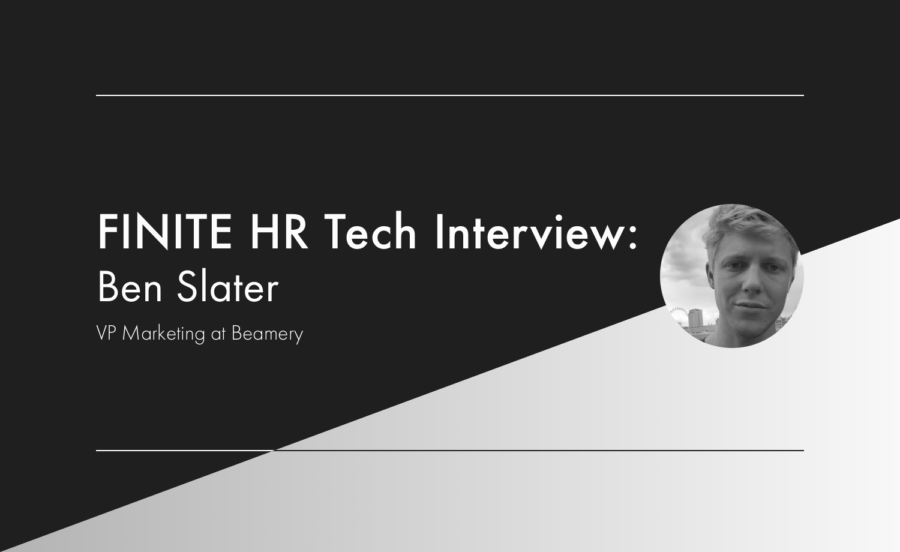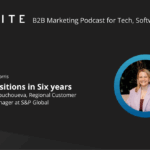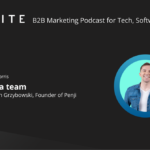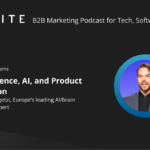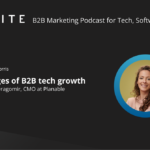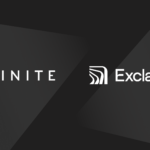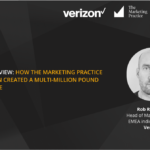In a relatively new field like HR Tech marketing, a content strategy can attract, educate and engage your target audience. In particular, thought leadership content can build trust and reputation, while having to adapt to a rapidly changing HR Tech landscape.
In this interview, we talked to Ben Slater, VP Marketing at Beamery – an operating system that allows enterprises to attract, engage, and retain top talent, and manage the entire talent journey on one unified platform.
Ben tells us about his experience in creating a content strategy for Beamery and how it has adapted to growth and an evolving HR Tech market.
Read the interview to learn:
- Why thought leadership content is valuable for an HR Tech marketing strategy in particular
- How thought leadership content differs from education content
- How to stand out as a thought leader within a competitive landscape and with a growing sense of digital fatigue
- Which channel is best for HR Tech thought leadership content
FINITE: Hi Ben! Firstly, could you please tell us about your background in HR tech marketing and your current role as VP marketing at the Beamery?
Ben: Yeah, of course. I joined Beamery as the first commercial hire – pre-revenue, pre-product – so it was certainly an exciting time. Obviously at that time, the entire organization was focused on figuring out the right product and GTM strategy.
We’ve built out the marketing organization significantly since then, both in Europe and across North America (we’re always hiring, so feel free to reach out to me on LinkedIn if you’re interested!).
We founded the company on the premise that regardless of where you live, your background, pedigree, race, or religion, that everyone should have the same access to work, and that companies needed to fundamentally transform their hiring process — to place the candidate – their skills, aspirations, and experiences – at the core of the hiring process.
Beamery’s Talent Operating System (TOS) is the backbone of the modern enterprise. It allows talent functions to drive strategic transformation, reach diversity recruiting targets, identify and engage potential high performers, optimize the end to end talent experience, and identify the skills and capabilities they need to build their workforce of the future.
FINITE: That sounds great. You use a lot of thought leadership content in your marketing at Beamery. Why do you think thought leadership is valuable for HR tech marketing in particular?
Ben: I think when you look at your business and ask the question, is thought leadership valuable? The answer is it depends. It depends entirely on the target market and who you’re trying to sell to.
Let’s say for example, your HR product is only applicable for 100 companies worldwide. The types of content and the types of thought leadership you create are probably going to be very different from the types of thought leadership that you’d create if you can sell to 100,000 organizations.
I do think that thought leadership tends to have intrinsic value, particularly if you’re in a space like we are, where you’re creating a new category and trying to architect the vision of what that’s going to look like over the next five to ten years. Thought leadership is a crucial part of painting that vision and helping other organisations understand where the puck is going.
I mean look at the last 12 months? Organisations have had to turn on a dime – they’re looking to vendors like Beamery to help them understand the things that are important now. Such as the way they should be up-skilling their workforce, the things they need to put in place to be agile and able to step into the future of work. Our thought leadership strategy is designed to help them solve these challenges and move forward effectively.
FINITE: That’s an interesting point. You mentioned you are marketing in a new category so you have to educate your audience. How do you think thought leadership content differs from educational content?
Ben: I think ultimately you need multiple different types of content in your mix. I would tend to look at it almost broken down by persona. Vision led content is great for connecting with leaders who are thinking about where their organisation needs to adapt to be successful. But you also need to be able to help end users, champions of the products, solve problems.
So when I look at what we did at Beamery, a lot of what we created to start out with was this very focused ‘how to’ content. As we saw talent organisation’s start to behave more like sales and marketing teams, a whole range of new tactics became very important to them.
And so we really focused on developing content that told them how they could do that stuff better, how they could go and build a pipeline of candidates versus just reviewing applications that came in. How they could build their employment brand. That helped us build up a really strong search profile, and that was a fantastic foundation.
And then, as the industry starts to understand how they can do these things, it’s also important to us to kind of layer in the why. Why is this important? Why is this the most important thing for you to do? And that’s something that maybe the signatory of the contract has cared slightly more about. So having the different layers of content really matters, but I think you certainly need both.
FINITE: In a competitive landscape with a growing sense of digital fatigue, how do you stand out as a thought leader?
Ben: Now with everyone working from home and juggling different priorities (e.g. childcare), you’re competing for their attention in a whole different way – it’s not just meetings or work projects that they are delaying to read your content, it’s everything else in their life. The bar for quality therefore, really has to go up a few notches.
For this reason, we have a range of different types of content that we do at Beamery. Let’s take a couple – we have a podcast that’s incredibly focused on rich insights from leaders and talent operations. We have some fantastic guests on that and the content is a lot deeper than perhaps you’d see in other channels. Now we pair that with our webinar program that mixes in ‘how to’ content from champions of our product and with insights from executives around strategic transformation. Then we have some really thoughtful research published by an internal function at Beamery which sits within marketing.
When someone opens an ebook or a report, or starts engaging with any kind of resource, you want them to be like, “Oh wow, that’s something I didn’t know. That’s something I can take away and use”. Focusing on the less is more versus content for content’s sake makes a big difference.
FINITE: With this array of content in mind, which channel do you think is best for thought leadership content about HR tech?
Ben: I think you need a combination of all channels to be totally honest. Particularly at the moment, I think if you spend too much time with one, you just create fatigue.
So I think you have to have a strategy that hits audio, you have to have a strategy that hits video, you have to have some form of virtual events. And I don’t think that email or written content is dead by any stretch of the imagination. I think you just need to be a bit more creative.
FINITE: Thanks so much for giving us your insights into thought leadership for HR Tech Ben!
To read the previous edition of the FINITE HR Tech Interview Series and to learn more about customer advocacy marketing, head here!
